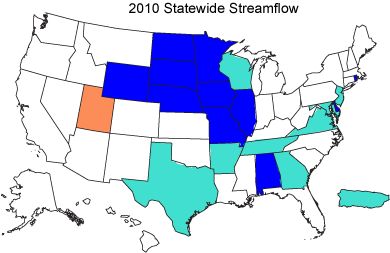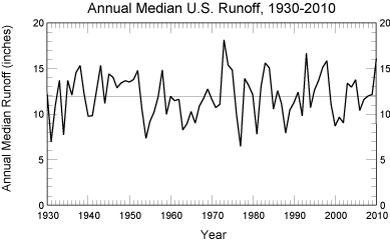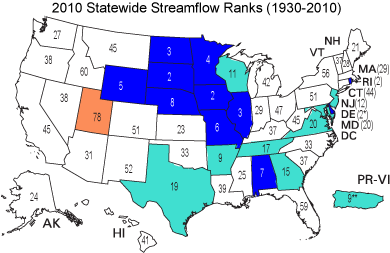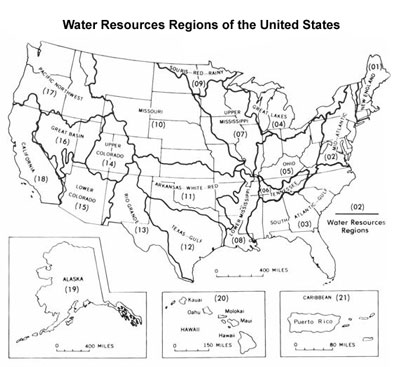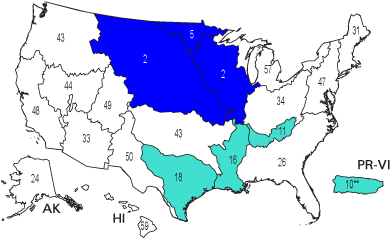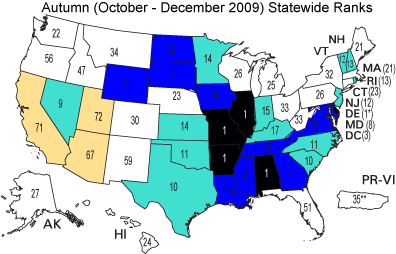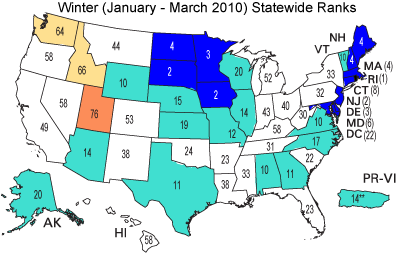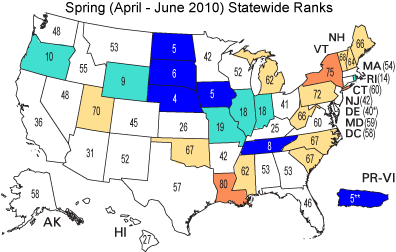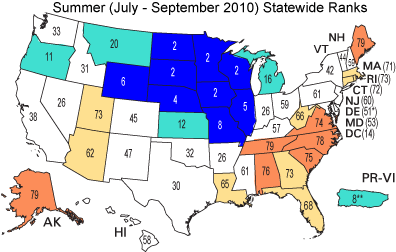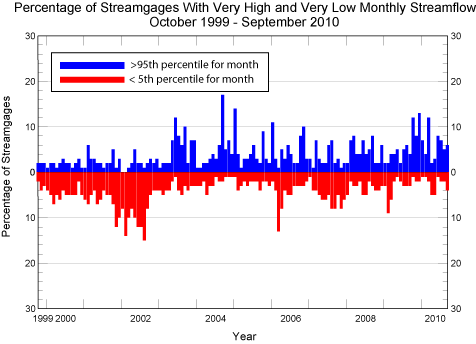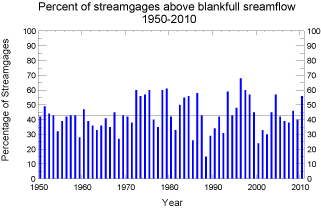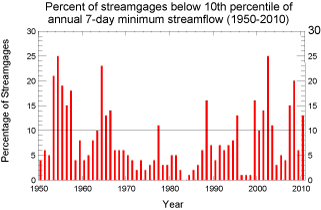 |
This summary is published as USGS Fact Sheet FS-2011-3043 and can be downloaded as a PDF file
Streamflow of 2010 - Water Year Summary
U.S. Geological Survey
Reston, Virginia
January 2011
National Overview
| Runoff in the Nation’s rivers and streams during 2010
(16.10 inches) was much higher than the long-term annual median for the
United States (11.98 inches). Nationwide, 2010 streamflow ranked 3rd out of the 81 years in the period 1930-2010.
|
Regional Patterns
Seasonal Characteristics
High and Low Flows
Additional Information
The USGS operates a network of approximately 7,600 streamgages nationwide, many in real-time. Current information derived from these stations is available on the web at http://waterwatch.usgs.gov. Tables of data that summarize historical streamflow conditions by State, beginning in the year 1900, can be accessed at http://waterwatch.usgs.gov/?m=statesum. These tables are updated every few months to reflect the most current streamflow data. The streamflow information used to prepare this summary is also used for water management, monitoring floods and droughts, bridge design, and for many recreational activities. To obtain real-time and archived streamflow data and information, visit http://water.usgs.gov/nwis. Although the national streamgage network is operated primarily by the USGS, it is funded by a partnership of 850 agencies at the Federal, State, Tribal, and local levels. For more information about the streamgage network, see http://water.usgs.gov/nsip/.
|
||||
| Accessibility FOIA Privacy Policies and Notices | ||
| U.S. Department of the Interior | U.S. Geological Survey URL: http://water.usgs.gov/waterwatch/ Page Contact Information: Office of Surface Water. |
|
 |
